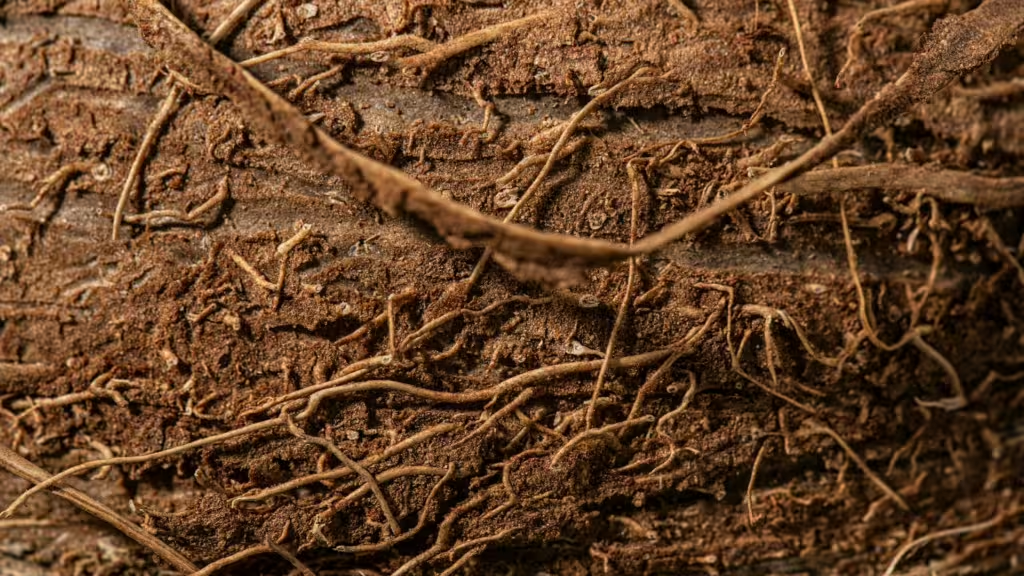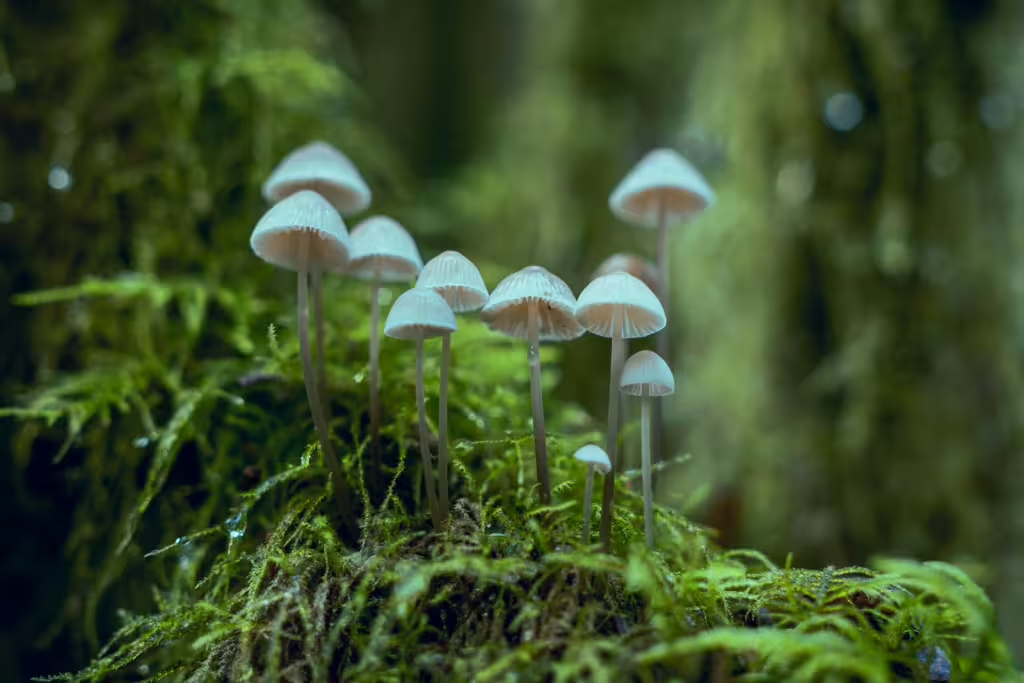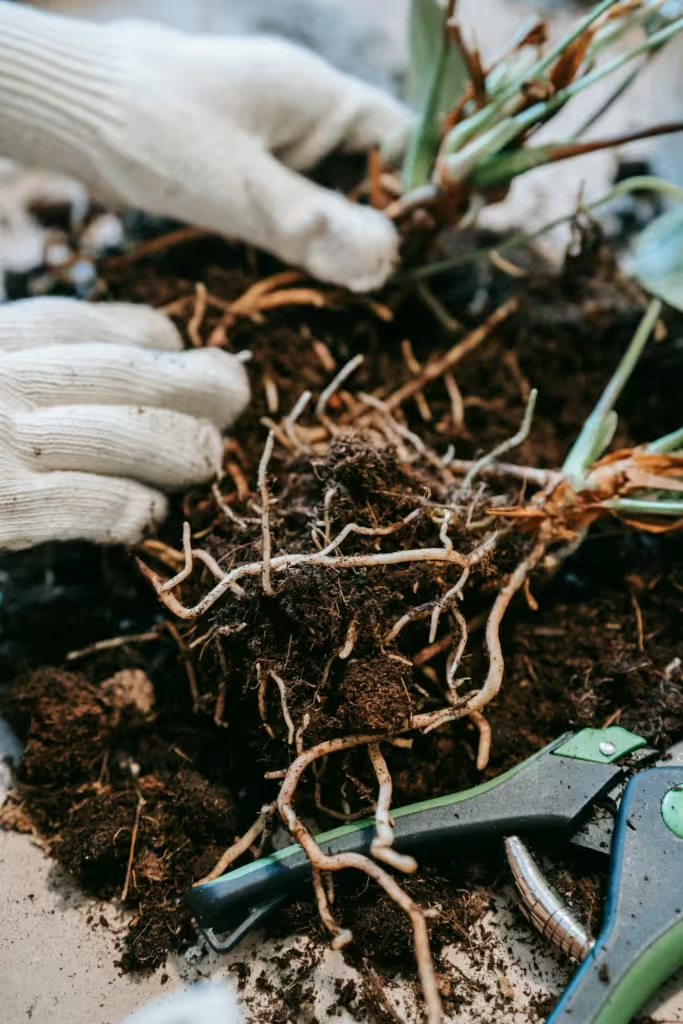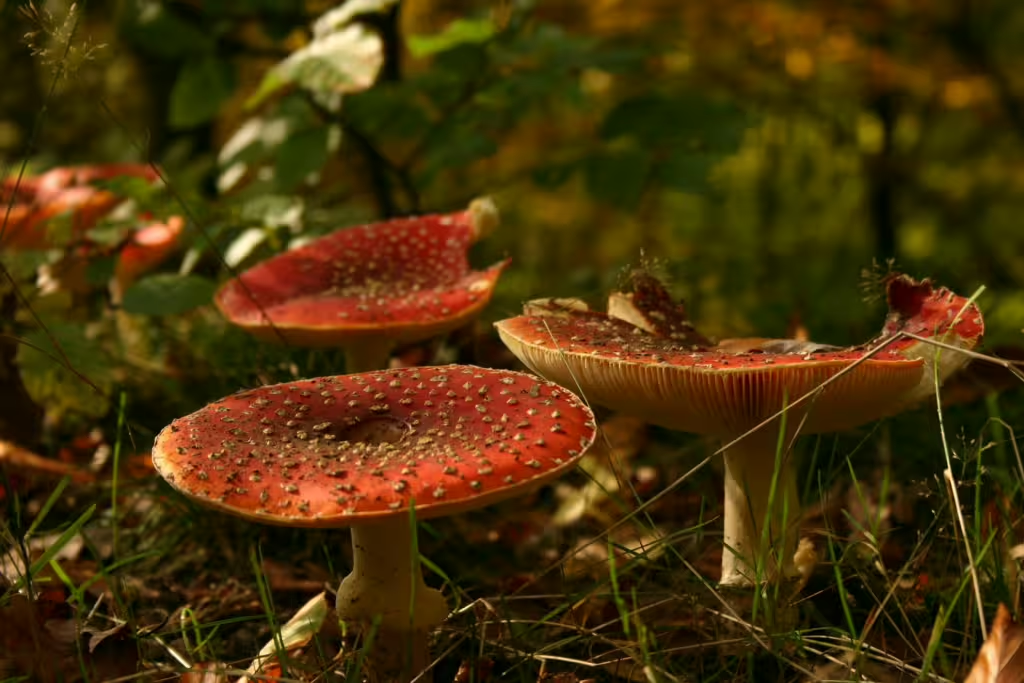While most plants grow above ground, their leaves and boughs stretching toward the nourishing sun, their roots run deep, digging into the soil to find purchase and nutrients. Deep beneath the surface of the Earth, mingling with these thirsting roots, lies a hidden world of underground plants and fungi that is as mysterious as it is fascinating. Most readers are likely unfamiliar with the unseen world of plants that grow underground but this mostly-unexplored realm is actually brimming with diversity and overlooked beauty.
That’s right, far below the towering trees, vibrant flowers, and sprawling green leaves of the surface world exists an array of ecosystems in which many essential plant species spend their lives. The plants and fungi that can survive in such an environment are often crucial to the continued health of the ecosystems above. These organisms provide a wide array of benefits, from enriching the soil to feeding animals and human beings.
In this article, we will literally delve down into the world of underground plants. Our focus shall be on the roots, tubers, bulbs, and, of course, mushrooms and fungi that enable so many species to continue existing on the surface. Though most of these plants may not be seen on the surface, they still play key roles in both natural and cultivated environments, and we shall explore those roles.
Root Systems: The Foundation of Life Underground
If you think about it, most plants actually begin their journey beneath the surface of the soil. Nearly all plants begin as seeds, which germinate in the soil and develop into seedlings that reach their way up and towards the sky. However, it’s not just the seeds that live underground; it’s the roots. Roots are an essential piece of the plant, one of the main three that preschoolers learn about. They are meant to anchor the plant into the soil, while also serving as the plant’s lifeline, in a sense, providing it with water and nutrients from the earth.
Types of Roots

There are several different types of root systems that exist in the plant world, each playing a distinct role in the plant’s survival.
Fibrous Roots: Fibrous roots are thin, thread-like roots that form a dense underground network. Ever rip up a chunk of grass? The clumps of tiny roots found in grasses, such as wheat, corn, rice, and yes, the same types of grass you have in your own backyard, are fibrous roots. These types of roots are meant to prevent soil erosion by holding the soil together. At the same time, these roots are also incredibly efficient at absorbing water and nutrients from the surface layers of the soil. This is why so many grasses have roots, because they tend to be rooted closest to the soil surface.
Taproots: Taproots are a bit different than fibrous roots and by a bit, we mean, very. These types of roots are thick, central roots that grow deep into the soil. Carrots, beets, and radishes are examples of plants with taproots, only the roots on these plants also tend to be edible. This makes sense though, if you think about it, as taproots allow plants to access deep water reserves and store nutrients for the plant’s growth.
Adventitious Roots: These roots don’t grow like normal plants do. They come from parts of the plant other than the root, such as from the stems or leaves. Roots like these are commonly found in plants like ivy and other clinging vines, which use their roots to stick to surfaces and spread in every direction. As with all roots, adventitious roots are crucial for the plant’s continued survival, though in this case, they are vital to the organism’s ability to propagate and expand.
Underground Function of Roots
Roots serve several critical functions in the life of a plant. First and foremost, they absorb water and nutrients from the soil, which provides the attached plant with the energy needed for it to grow. Roots are also used to help anchor the plant in place, preventing it from toppling in the wind or being washed away in heavy rains. This is why so many plants are affected by the shifting weather patterns of climate change, because their roots can become brittle from lack of water or loosened by oversaturated soil.
What many people don’t realize it that many plants store excess food in their roots. We touched on the subject of taproots earlier, but carrots and beets are not the only plants that behave in this way. Potatoes and other tubers store starches and sugars in the same way. In general, these stored compounds are used during the plant’s growth cycle or during times when the plant faces stress, such as during drought or winter. That is, unless we pick them and eat them first.
Tubers and Bulbs: Hidden Energy Reserves
Another fascinating group of underground plants are tubers and bulbs. These structures are specialized for storing nutrients and can give rise to new plants.
Tubers
Though the name is not attractive in the slightest, tubers represent one of the most important types of plants in the agricultural world. A tuber is a swollen, underground stem that stores nutrients for future growth and of all the known tubers in the world, potatoes might be the most vital to our own continued survival. This family of squat, delicious vegetables represents one of the best-known examples of tuberous plants in the world. The potato tuber stores starch, which the plant can use during the dormant phase or when environmental conditions aren’t favorable for growth, but because of this, it is also an essential component of many human diets.
Other examples of tuber plants include yams, Jerusalem artichokes, and sweet potatoes; and yes, we know that at their core, most of these are still just potatoes. Be that as it may, these plants represent valuable food sources for both humans and animals alike.
They are tough little veggies and their ability to store energy underground allows them to survive through some of the most unfavorable environmental conditions, such as cold winters or dry periods. That said, they are not immune to climate change or any other destructive environmental factors by any means, as their shallow roots make them particularly susceptible to drought conditions. Still, some scientists are working to create drought-proof potato strains in the wake of further global changes.
How Tubers Grow: Tubers, like potatoes, are formed from specialized stems that swell and store energy as starch. When conditions are optimal, the tuber will sprout and send shoots upward from its round, tuberous root, in order to form new plants. This reproductive process is quite remarkable, and it allows the plant to propagate even if the top portion of the plant is damaged.
Bulbs
Bulbs are another underground structure that plants use to help store energy. Many of the most widely-used vegetables are part of this family. Unlike tubers, bulbs are not a solid block of stored starch, but are made up of layers of fleshy scales, which store food reserves for the plant. Onions, garlic, tulips, and lilies are all examples of bulbous plants. Bulbs are excellent because they are basically designed by nature to survive harsh winters.
How Bulbs Grow: Bulbs are typically planted in the soil but remain dormant until the conditions are right for growth. When the bulb does begin to sprout, it pushes up through the soil, producing new shoots, flowers, and leaves from between the center layer of the bulb itself. After the plant flowers and produces seeds, it will often die back, leaving the resultant bulb underground to lay dormant and prepare for the next growing season.
Fungi and Mushrooms: The Fascinating World of Underground Life
Let’s get this out of the way; yes, we understand that mushrooms and fungi are not plants in the traditional sense. Yet, while they may not be strictly floral, they are still undeniably important players in the world of underground growth. They are also an essential piece of the ecological puzzle for countless ecosystems all over the world. We typically associate mushrooms with their above-ground fruiting bodies, the strange caps and unusual shapes that stand so strangely amongst the flora of the world, but the truth is, much of their life cycle happens beneath the soil’s surface.

What Are Fungi?
Fungi are actually pretty enjoyable to be around! That’s a bad joke, but we had to make it. Scientifically, fungi make up an entirely separate kingdom of organisms from plants. Not only are they distinctly different from plants, they are also different from animals and bacteria as well. The fungus family includes everything from mushrooms, to molds, to yeasts, and so much more. Unlike plants, fungi don’t use photosynthesis to produce food. Instead, they feed on organic material, breaking it down and recycling nutrients back into the environment.
The underground network that exists between all fungi in an area is called mycelium. Mycelium consists of a vast web of thread-like structures called hyphae that spread out through the soil, feeding on decaying organic matter, dead plants, and other nutrients. Mycelium is essentially what we think of as the “root” of a fungus, though it differs greatly from the roots of plants.
Mushrooms: The Fruit of the Fungus
The mushrooms that we see are actually the reproductive organs of fungi. These singular structures are the above-ground fruiting bodies that produce spores, which disperse and can lead to the growth of new fungal colonies. Mushrooms themselves are often seen as a delicacy or a wild foraged food, but remarkable and delicious though they may be, they are only a small part of the larger underground network of fungi.
Types of Mushrooms: There are two primary types of mushrooms: edible and toxic. Edible mushrooms, like button mushrooms (the ones you find in the supermarket), portabello, shiitake, and oyster mushrooms, are cultivated and harvested for their nutritional and culinary value. Some mushrooms, on the other hand, are deadly if consumed. Some examples of these toxic mushrooms include Amanita and death cap mushrooms.
Mushrooms and the Ecosystem: Mushrooms play a crucial role in ecosystems as decomposers and nutrient recyclers. Their ability to break down organic matter, recycling nutrients into the soil and making them available for other plants, means they are crucial to the continued health of nearly every ecosystem in which they are found.
Fungal Networks: Mycelium and Soil Health
Mycelium is not just important for fungi—it’s also critical the health of the surrounding soil and the plants that live nearby. Mycelial networks help to improve soil structure by binding soil particles together, promoting the growth of plants, and enhancing the soil’s water retention capabilities. They are often part of mycorrhizal networks, which sees their mycelium physically interacting and informing the roots of nearby plants. In this way, the mycelium provides an underground highway for plants to communicate with one another. In fact, scientists have found that plants can use the these networks, otherwise known as the “wood wide web” to exchange nutrients and even warn each other about potential threats, such as pests or disease.
Other Fascinating Underground Plants
In addition to roots, tubers, bulbs, and fungi, there are plenty of other plants that spend a significant amount of time underground. These lesser-known plants might be rare but they are no less intriguing:
Ginseng
Ginseng is a medicinal plant that grows in the forests of North America and East Asia. It’s famous for its roots, which are believed to have a multitude of health benefits, including boosting energy and improving cognitive function. Anyone who has ever taken ginseng can probably attest to these qualities, as it does give a bit of a caffeine-coded buzz of energy. Ginseng is quite slow-growing, and its roots can live for several years underground before being harvested, usually by hand in order to preserve the quality of the roots themselves.
Truffles
Truffles are another type of edible fungi that grow underground. These unique-tasting fungi are highly prized for their intense flavor and aroma. They are a sought-after delicacy in the culinary world and are actually typically found in association with oak or hazelnut trees. Unlike mushrooms, which grow above ground, truffles form below the soil’s surface and can only be located using trained dogs or pigs, who can sniff them out via their strong scent.

True Investigator Says…
As you can see, the underground world of plants may well be unseen, but it is no less rich in diversity and complexity. From the roots and tubers that anchor plants to the soil, to the vast mycelial networks of fungi and mushrooms that keep the plant world growing and humming, these subterranean organisms are vital to the health of ecosystems the world over. As with so many of life’s amazing wonders, we take the surface beauty of plants for granted, while failing to recognize the supreme importance of the hidden life that lies right below the surface of the soil.
Discover more from TrueInvestigator
Subscribe to get the latest posts sent to your email.


